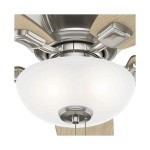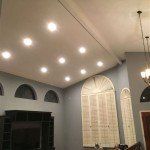High Ceiling Warehouse Lights: Essential Aspects to Consider
For high-ceiling warehouses, efficient and well-distributed lighting is crucial for ensuring safety, productivity, and energy efficiency. Industrial high ceiling warehouse lights are specifically designed to meet the unique challenges of these vast spaces, offering tailored solutions for optimal illumination.
Luminosity and Coverage
The most critical consideration for warehouse lighting is luminosity. High ceiling lights must provide adequate light levels to illuminate all areas of the warehouse, including aisles, storage racks, and workspaces. This ensures clear visibility for workers, preventing accidents and improving productivity. Coverage is equally important, ensuring that light is evenly distributed throughout the warehouse, eliminating dark spots or glare.
Light Distribution and Beam Angle
Light distribution and beam angle are essential factors in determining the effectiveness of warehouse lighting. Wide-angle lights provide broad illumination, while narrow-angle lights focus light on specific areas. The appropriate beam angle depends on the warehouse layout and the specific tasks being performed. For example, wide-angle lights are suitable for general illumination, while narrow-angle lights are ideal for task lighting in specific work areas.
Energy Efficiency and Maintenance
In high-ceiling warehouses, energy consumption can be a significant operating expense. Energy-efficient high ceiling warehouse lights can substantially reduce energy costs. LED lights, for instance, consume significantly less energy than traditional lighting sources and have longer lifespans, reducing maintenance costs and the need for frequent replacements.
Durability and Construction
Warehouse environments can be harsh, with dust, moisture, and occasional impacts. High ceiling warehouse lights must be durable enough to withstand these conditions. Look for lights with robust construction, corrosion-resistant materials, and impact-resistant designs. This ensures longevity and minimizes the risk of damage or failure, reducing maintenance downtime and replacement costs.
Control and Dimming Capabilities
In some cases, it may be beneficial to control the light levels in the warehouse. Dimming capabilities allow for adjustments based on different tasks or times of day. For example, brighter lighting may be needed during peak operating hours, while lower light levels may be sufficient during off-hours or for specific tasks that require less illumination.
Compliance with Standards and Regulations
Industrial high ceiling warehouse lights must comply with all applicable safety and building codes. This includes meeting industry standards for lighting levels, glare, and emergency lighting. Proper compliance ensures a safe and compliant workplace, reducing the risk of accidents, fines, or other liabilities.

Warehouse Led Lighting Solutions Interior Exterior S

Warehouse Lighting Guide Bulb Center

High Bay Linear Leds Industrial Led Lights Ceiling Utility Bulbs

5 Advantages Of Using High Bay Led Lights In A Warehouse

Warehouse Lighting Industrial Led Manufacturers Straits

Upgrading Your Warehouse With Led Lighting Cjm

All About Led High Bay Light Fireflier Lighting Limited

Linear High Bay Light In Warehouse Aisle 160lux Agc Lighting

Tokyo Seira Kogyo Corporation High Bay Lighting Warehouse Projects Eye Iwasaki Electric

Warehouse Led Lighting Solutions Interior Exterior S
Related Posts








